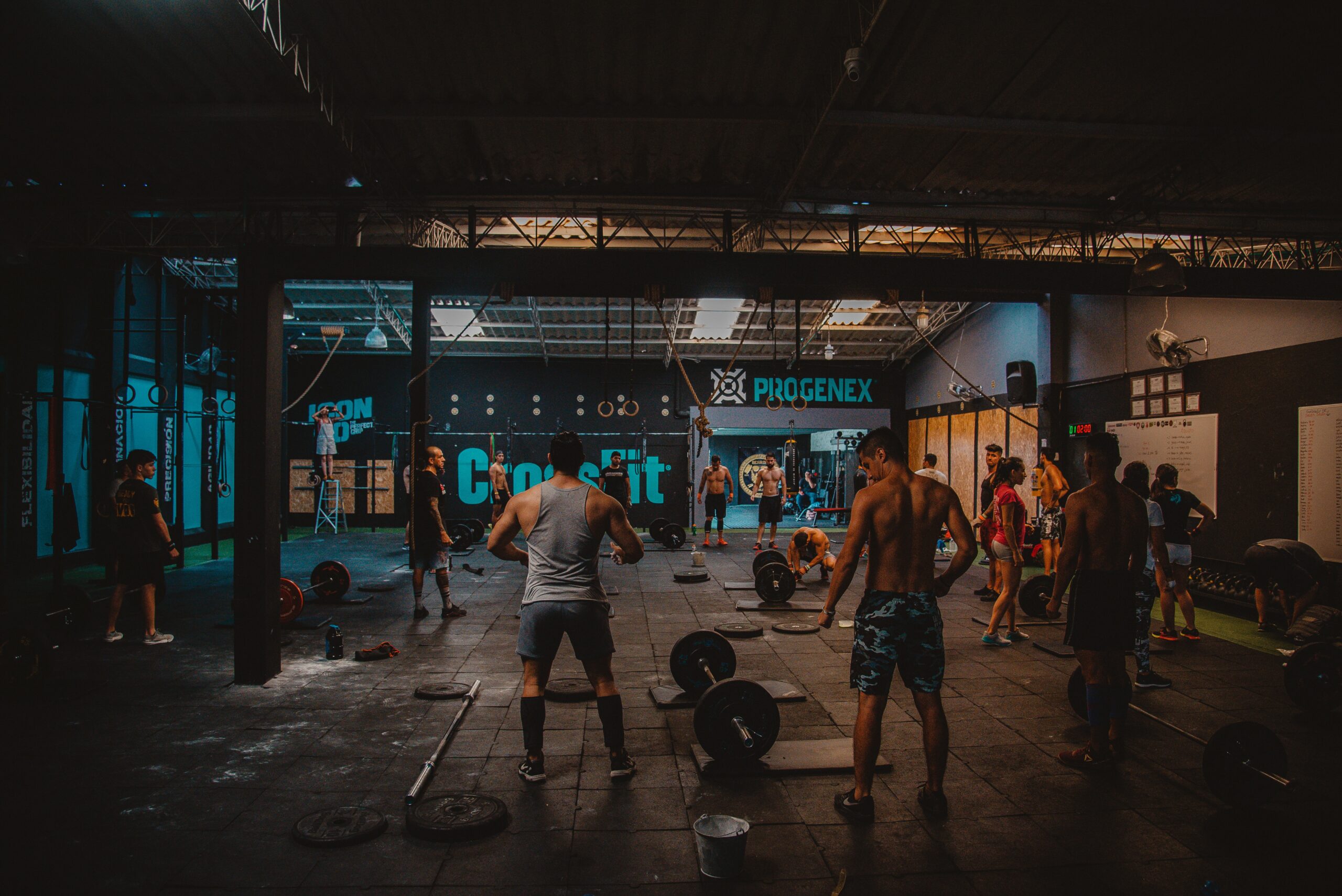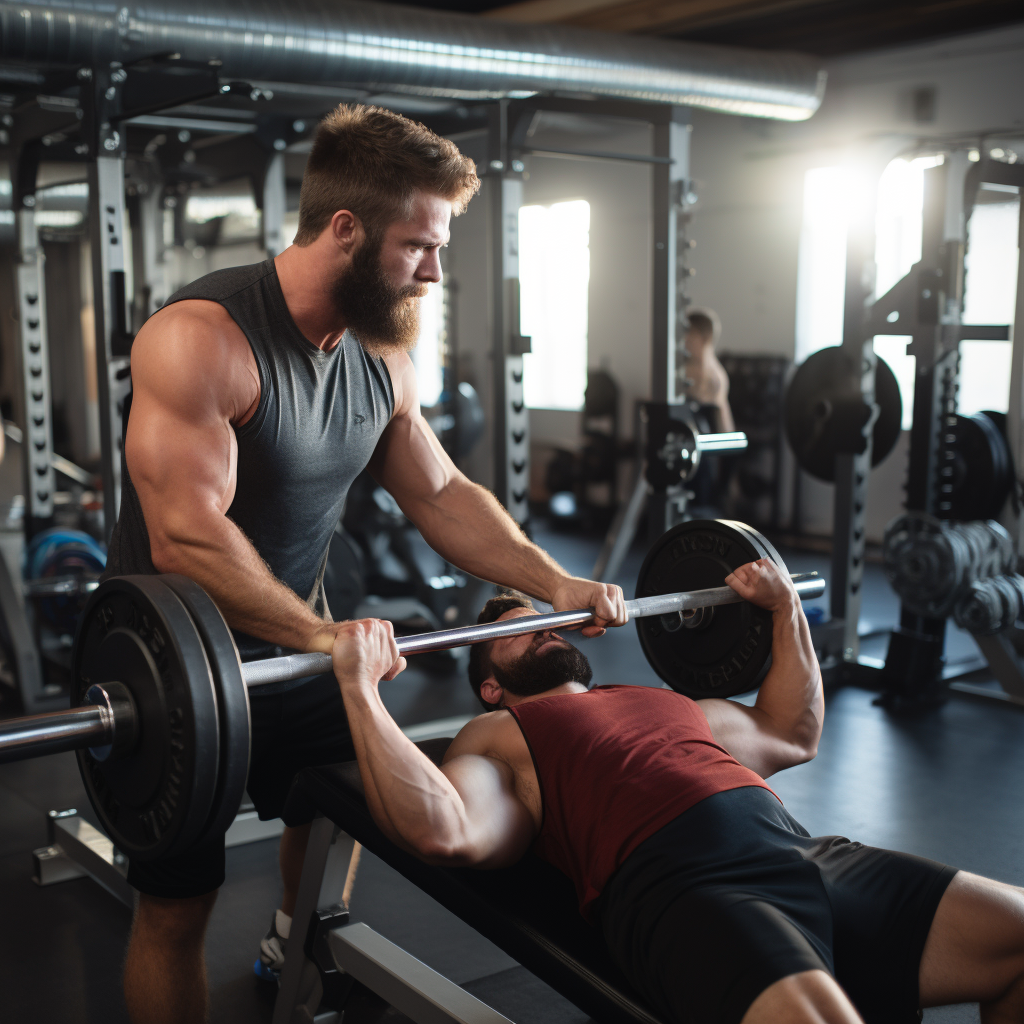Curious about training for hypertrophy vs. strength? With so many workout routines and methodologies out there, it’s essential to understand what sets these two training styles apart and how to incorporate them effectively into your regimen.
This article demystifies the science behind hypertrophy and strength training, examines their respective benefits, and provides practical guidance on how to design a personalized workout plan to achieve your unique fitness goals. Whether you’re an aspiring bodybuilder or someone looking to enhance their functional strength, this comprehensive guide will equip you with the knowledge and insights to unlock your full potential. So, let’s embark on this exciting journey to discover the ultimate training approach for you and transform your body into a masterpiece of strength and aesthetics. Stay tuned, and let the gains begin!
What Is Hypertrophy?
Hypertrophy is the process by which muscle fibers increase in size and strength, resulting in overall muscle growth. It is an essential component of strength training and bodybuilding, as it contributes to improved performance and a more aesthetically pleasing appearance.
There are two primary types of hypertrophy—sarcoplasmic and myofibrillar. Sarcoplasmic hypertrophy focuses on increasing the volume of the sarcoplasm, the fluid and energy-providing substance surrounding muscle fibers. It often results in a more “pumped” appearance but may not provide significant gains in strength. Myofibrillar hypertrophy, on the other hand, involves the growth and multiplication of the actual muscle fibers, leading to greater strength and endurance. This type of hypertrophy is more common in traditional strength training programs and provides a more functional and dense muscle growth.
Hypertrophy Training: How To
Hypertrophy training involves a combination of specific workout strategies and lifestyle factors that support muscle growth. By incorporating the following elements into your fitness routine, you can effectively target hypertrophy and achieve your desired muscle gains.
Exercise Selection: Choose compound exercises, such as squats, deadlifts, bench presses, and pull-ups, which work multiple muscle groups and stimulate a greater number of muscle fibers.
Training Volume and Intensity: Perform 3-6 sets per exercise with 8-12 repetitions per set, using weights that challenge you enough to create muscle fatigue within the target rep range.
Tempo and Time Under Tension: Incorporate controlled repetitions with a tempo of 2-3 seconds on the concentric phase and 3-4 seconds on the eccentric phase to increase the time your muscles are under tension.
Training Frequency: Work each muscle group at least twice a week to provide an optimal stimulus for hypertrophy while allowing for sufficient recovery.
Training For Physical Strength: How To
When it comes to improving physical strength, the primary objective is to increase the amount of force your muscles can produce. To achieve this, we need to consider the following elements in our training program:
Lift Heavy: Strength training requires you to lift weights that are challenging, typically in the range of 70-85% of your one-rep max (1RM). This intensity will help recruit a larger number of muscle fibers and stimulate the nervous system, leading to increased strength gains.
Compound Movements: Incorporate compound exercises like squats, deadlifts, bench presses, and overhead presses, as they engage multiple muscle groups and joints simultaneously. These movements enable you to lift heavier loads, leading to greater overall strength development.
Low Reps, High Sets: Strength training typically involves lower rep ranges (1-6) and higher sets (4-6) to focus on neuromuscular adaptations. This combination allows you to lift heavier weights, maximize muscle fiber recruitment, and minimize fatigue during your workouts.
Adequate Rest Periods: Give yourself sufficient rest between sets, usually around 2-5 minutes. This time allows for better recovery and ensures that you can maintain intensity and proper form throughout your workout.
Progressive Overload: Continually challenge your muscles by gradually increasing the weight, volume, or intensity of your workouts over time. This progressive approach ensures that your body keeps adapting and growing stronger.
So, Which Training Style is Suitable For You?
Deciding whether to focus your training on hypertrophy or strength is a personal choice that depends on several factors. First and foremost, consider your goals. If your primary objective is to increase muscle size and improve your physique, hypertrophy training may be the right path. However, if your goal is to maximize your ability to lift heavy weights, increase your power output, or enhance your performance in a specific sport, strength training might be more suitable.
Your experience level plays a role in determining your training focus. Beginners should generally start with a foundational strength program before gradually incorporating hypertrophy-focused training as they become more comfortable with lifting. Time commitment is another important factor, as hypertrophy training often involves higher training volumes and shorter rest periods, resulting in longer workouts. In contrast, strength training consists of lower rep ranges and longer rest periods, leading to shorter, more intense sessions.
Ultimately, the choice between hypertrophy and strength training should be based on your individual goals, preferences, and lifestyle. Be sure to select a training focus that you can commit to and enjoy, as consistency and dedication are key to seeing progress.
Other Types of Training
Depending on your priorities, there are a few other types of training and objectives to consider beyond just hypertrophy or strength. For example, endurance training, functional training, and power training are three popular training methods that cater to different fitness goals and preferences.
Endurance training focuses on improving cardiovascular fitness and muscular endurance, enabling individuals to perform activities for extended periods without fatigue. This type of training often includes long-distance running, cycling, swimming, and circuit training with high repetitions and lighter weights.
Functional training emphasizes exercises that mimic daily activities or sports-specific movements, aiming to improve overall performance and reduce the risk of injury. This type of training often incorporates compound exercises, core strengthening, and balance exercises, using tools such as kettlebells, medicine balls, and suspension trainers.
Power training, on the other hand, aims to increase the speed at which you can produce force, enhancing explosive strength and athletic performance. This type of training typically involves Olympic lifts, plyometrics, and sport-specific drills that focus on quick, powerful movements.

Final Thoughts: Hypertrophy vs. Strength
The choice between hypertrophy vs. strength training ultimately depends on your personal fitness goals, preferences, and lifestyle. Understanding the key principles of each training style, as well as other popular training methods such as endurance, functional, and power training, can help you create a well-rounded and effective workout routine that aligns with your unique objectives. Remember, consistency and dedication are crucial for long-term success, so be sure to select a training focus that you can commit to and enjoy. With the right approach, mindset, and determination, you’ll be well on your way to unlocking your full potential and transforming your body into a powerful and aesthetic masterpiece. Happy training!
To learn more, visit Train Fitness.
More Articles
Transformative Discipline: Exploring the Principles of 75 Hard
Recently, my friends and I were thinking of ways to start the new year positively, and 75 Hard will put us to the test in an effective way. Setting off on a path toward resilience and self-improvement frequently calls for more than just internal drive; it also calls...
The Best Full Body HIIT Workout You Can Do
Workouts involving full-body high-intensity interval training (HIIT) are a quick and easy approach to optimize your fitness progress. These workouts usually consist of a series of heart-pumping, intensive movements that target numerous muscle groups at once,...
Ab Workouts: Creating a Home Gym that Fits Your Lifestyle
Ab workouts are an important part of any fitness regimen because they target the core muscles that are crucial for stability, posture, and general strength. You can choose from a wide range of workouts to achieve a stronger core or a toned stomach. Engaging the...
Home Sweet Home Gym: Your Gateway to a Healthier Lifestyle
Picture this: no more rushing to the gym during peak hours, no waiting for your favorite machine, and no distractions from strangers. Instead, imagine a space where you can focus entirely on your fitness goals, set your workout schedule, and curate an environment that...
Mastering Back Exercises with Dumbbells
Dumbbell back workouts are a flexible and efficient way to improve your general strength, posture, and muscle growth. Dumbbells are a great addition to any exercise regimen, whether you're a back-health fanatic, an athlete, or just someone who enjoys working out....
The Fierce Flats
With our "Fierce Flat’s" blog, you'll be able to dive into the realm of lifting like never before. Forget about flashy kicks and high-tech soles; there's a new look in town. This blog will break down Converse and Vans' game-changing styles for all of your lifting...











